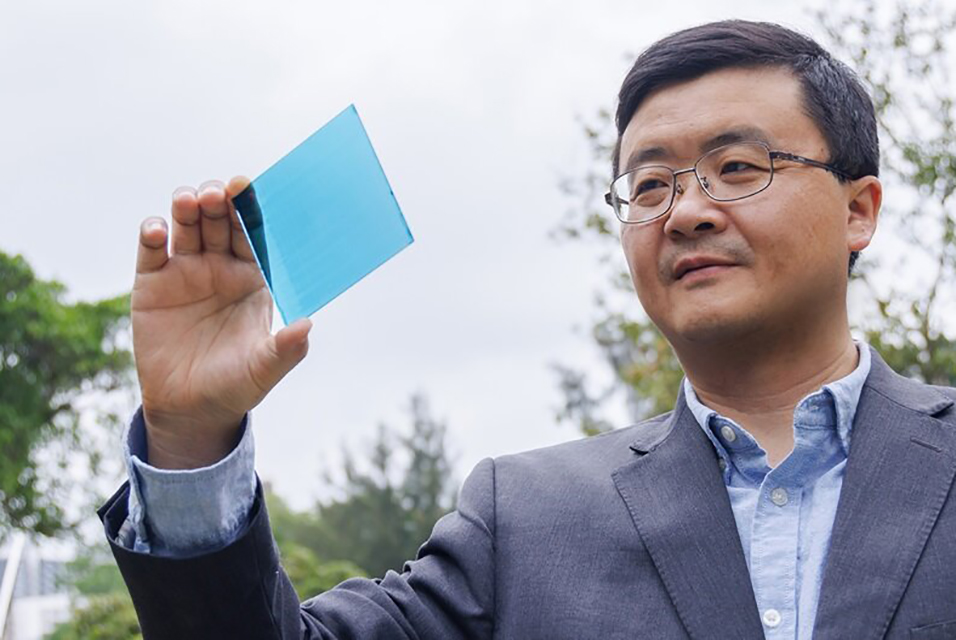HONG KONG.- Researchers from
The Hong Kong Polytechnic University have achieved a breakthrough power-conversion efficiency (PCE) of 19.31% with organic solar cells (OSCs), also known as polymer solar cells. This remarkable binary OSC efficiency will help enhance applications of these advanced solar energy devices.
The PCE, a measure of the power generated from a given solar irradiation, is considered a significant benchmark for the performance of photovoltaics (PVs), or solar panels, in power generation. The improved efficiency of more than 19% that was achieved by the PolyU researchers constitutes a record for binary OSCs, which have one donor and one acceptor in the photo-active layer.
Led by Prof. Li Gang, Chair Professor of Energy Conversion Technology and Sir Sze-Yen Chung Endowed Professor in Renewable Energy at PolyU, the research team invented a novel OSC morphology-regulating technique by using 1,3,5-trichlorobenzene as a crystallization regulator. This new technique boosts OSC efficiency and stability.
The team developed a non-monotonic intermediated state manipulation (ISM) strategy to manipulate the bulk-heterojunction (BHJ) OSC morphology and simultaneously optimize the crystallization dynamics and energy loss of non-fullerene OSCs. Unlike the strategy of using traditional solvent additives, which is based on excessive molecular aggregation in films, the ISM strategy promotes the formation of more ordered molecular stacking and favorable molecular aggregation. As a result, the PCE was considerably increased and the undesirable non-radiative recombination loss was reduced. Notably, non-radiative recombination lowers the light generation efficiency and increases the heat loss.
The research team's findings are described in the study "19.3% Binary Organic Solar Cell and Low Non-Radiative Recombination Enabled by Non-Monotonic Intermediate State Transition" published in Nature Communications. The conversion of solar energy to electricity is an essential technology for achieving a sustainable environment. Although OSCs are promising devices that harness solar energy cost-effectively, their efficiency must be improved if they are to be used widely in practical applications.
Prof. Li said, "Challenges in research came from the existing additive-based benchmark morphology control methods, which suffer from non-radiative recombination loss, thus lowering the open-circuit voltage due to excessive aggregation." The research team took about two years to devise a non-monotonic ISM strategy for increasing the OSC efficiency and lowering the non-radiative recombination loss. The publication of the study promises to galvanize OSC research.
Prof. Li said, "The new finding will make OSC research an exciting field, and this will likely create tremendous opportunities in applications like portable electronics and building-integrated PVs." The new door will open when low cost single-junction OSCs can achieve a PCE of over 20%, along with more stable performance and other unique advantages such as flexibility, transparency, stretchability, low weight and tunable color.
Prof. Li has been recognized as a Highly Cited Researcher 9 years in a row since 2014, which testifies to his significant impact on global research. His pioneering contributions to research on polymer solar cells since 2005 have brought sustainable influence on printable solar energy development with global recognition.
Prof. Li said, "The latest study shows a record low non-radiative recombination loss of 0.168 eV in a binary OSC with a PCE of over 19%. This is a very encouraging result for the long-standing research on OSCs that I have conducted over the past two decades. We have already achieved better OSC efficiency, and this will subsequently help accelerate the applications of solar energy."









